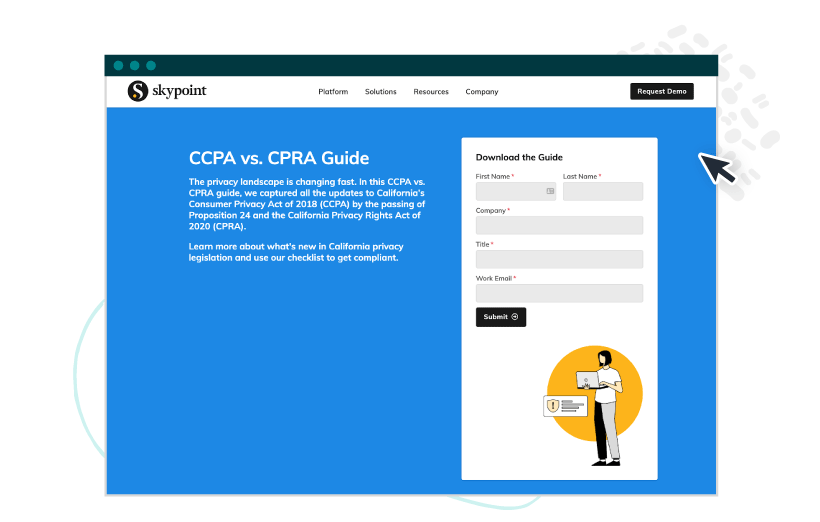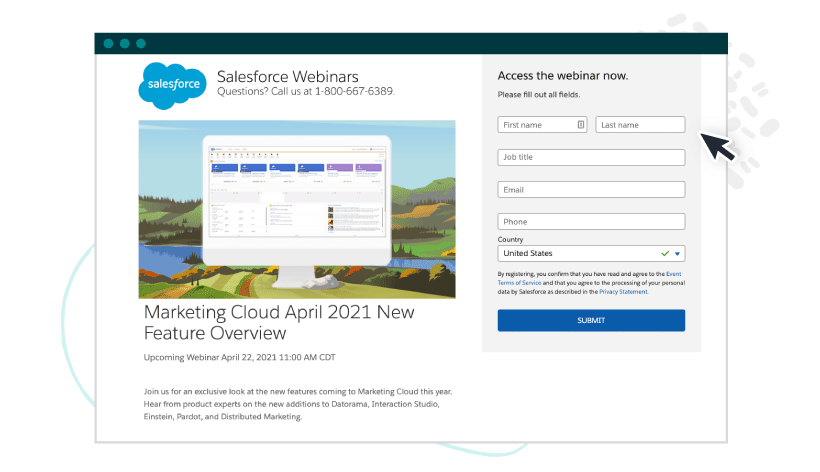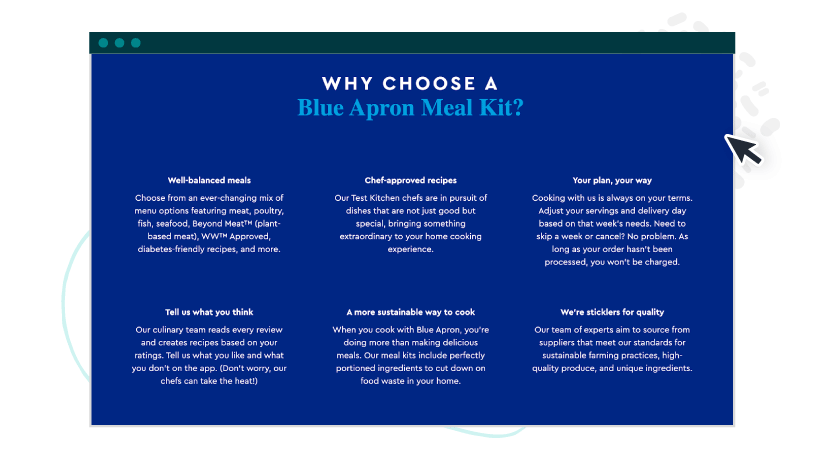What is a landing page? A landing page is a standalone web page that brings attention to a clear-cut brand offering (product or service) or content offer (ebook, checklist, research, webinar, etc.) with the sole purpose of converting visitors into leads.
What is another name for a landing page?
Other synonymous terms include lead page, lead magnet page, opt-in page, and conversion page.
What is a landing page used for?
Landing pages are all about making things happen. They don’t exist for visitor leisure activities; they exist to support business goals by serving up messaging and offers that drive conversions.
In exchange for specific and valuable information, the visitor submits their contact information through a form, demonstrating their interest in the offered solution.
Uses include:
- Feature best-selling products and services
- Boost low-performing products and services
- Test reactions and behaviors to new features or offerings
- Validate features and offerings with testimonials and success stories
- Aid campaigns, ads, content assets (gated and non-gated), and offers
What a landing page is not
Just because a page has a call to action on it does NOT mean it is a landing page. When visitors “land” on the page, that does not make it one either.
Let’s look at a few “this versus that” situations to clarify further.
Landing page vs. website
A website is a “choose your own adventure” experience that includes multiple pages and CTAs (calls-to-action) covering the full breadth of the brand and product or service. The visitor can navigate around the website, read some blog content, and maybe… they will reach the conversion point.
A landing page is a single page with a main call to action that drives interest in specific offerings and offers. Also worth noting: It’s frequently not part of the main website navigation menu unless a brand is using a website page for dual purposes.
Landing page vs. home page
A home page is an overview of the website, where the visitor scans content sections and decides if they will stay or bounce. Home pages need to pack a lot of punch to keep someone from bouncing, which is why the elements are similar to those that are typically present on a landing page. Commonly, a hero, key information, and a strong CTA are placed “above the fold.”
Landing page vs. microsite
A microsite is a mini website that is separate from the company’s main website. Like landing pages, a microsite is meant to serve a specific need — a campaign or a product or service. Unlike landing pages, a microsite always lives away from the website and contains a different URL.
The microsite encourages visitors to move around and take action within the microsite, where the other encourages action right on that page through form submissions.
Landing page vs. splash page
These two are often confused. Both standalone pages, the splash page differentiates itself easily just by its name… splash. A splash page is a window that pops up on the website page, rather than being a web page itself.
This pop-up usually conveys information before a visitor has a chance to take an action of their choice, which can cause friction that negatively impacts the user experience. A landing page still offers exploratory space for the visitor and usually does not contain any pop-ups.
Landing page vs. squeeze page
These two get mixed up frequently as well, because their nature is very similar to standalone pages that drive conversions.
A squeeze page is more concise — less written content, little to no images, focused on one offering, cut and dry CTA form fields (name and email address). Landing pages will be longer and more in-depth with one or several offerings and with more form fields in addition to name and email address (a question with dropdown options or an open field may even appear on the form).
Examples for inspiration
Data privacy guide by SkyPoint Cloud
New features webinar by Salesforce
Dual-purpose website landing/pricing page by Blue Apron
Get landing page and website copy that keeps web visitors interested in your brand and leads them to convert by talking to a content specialist at ClearVoice today.






